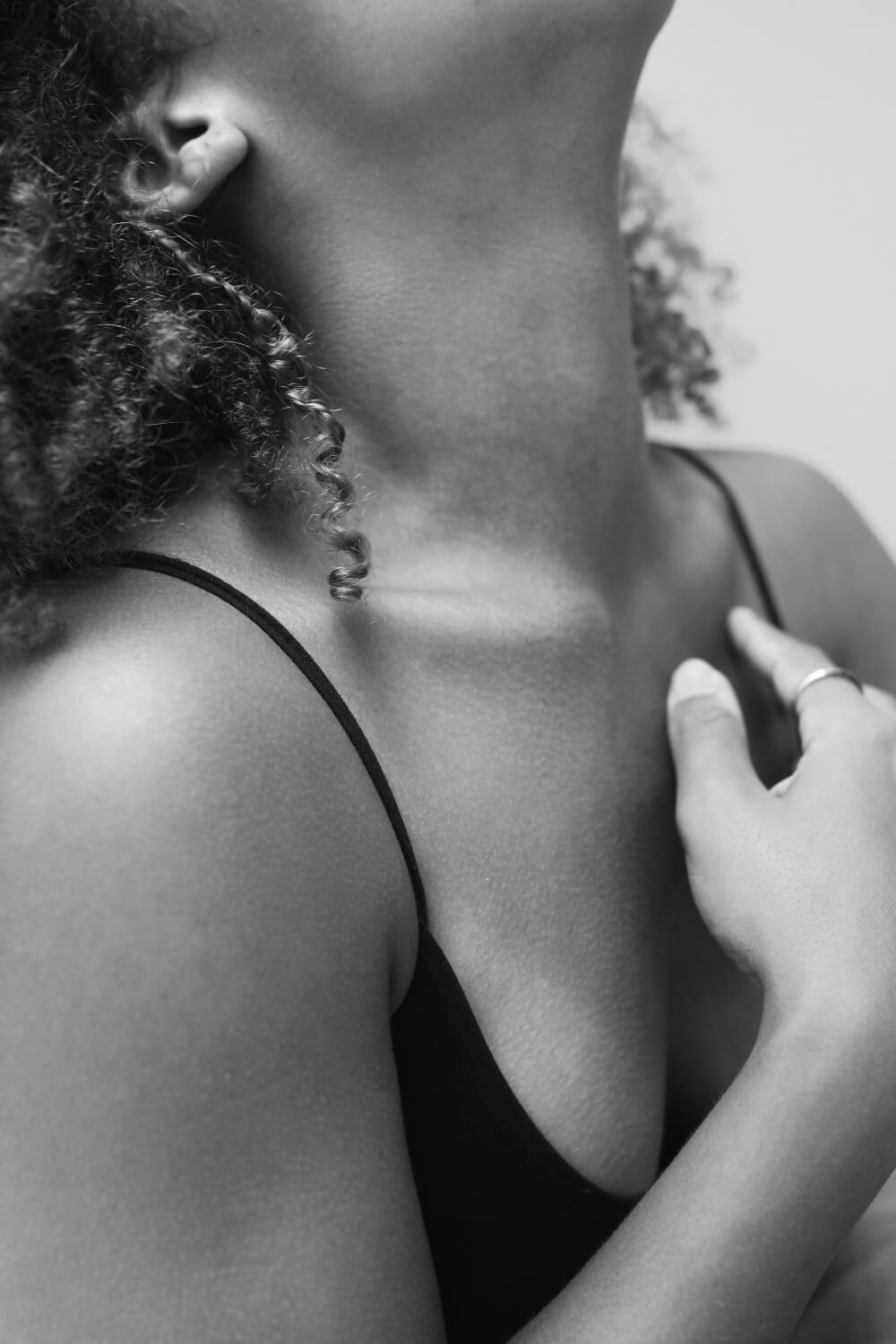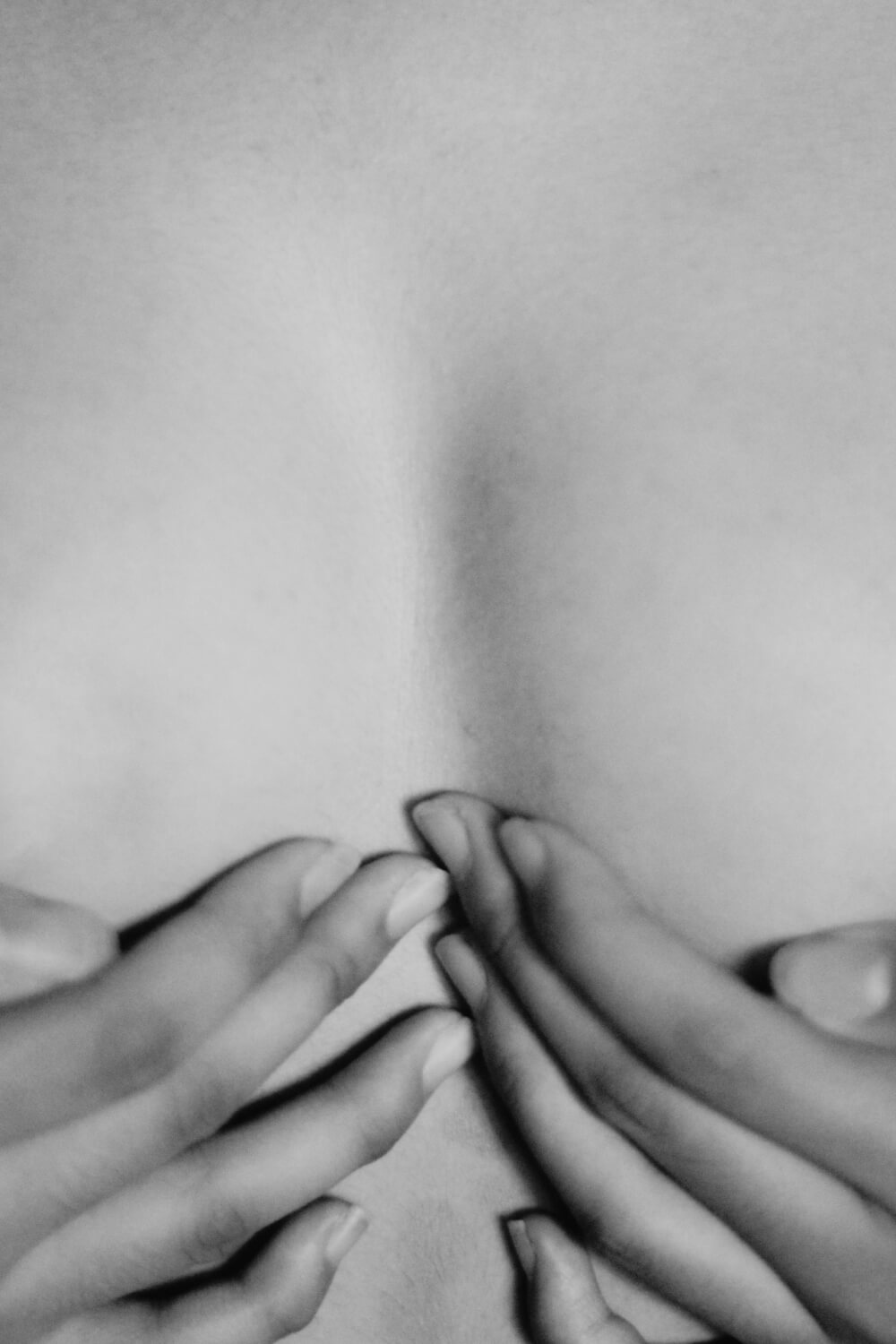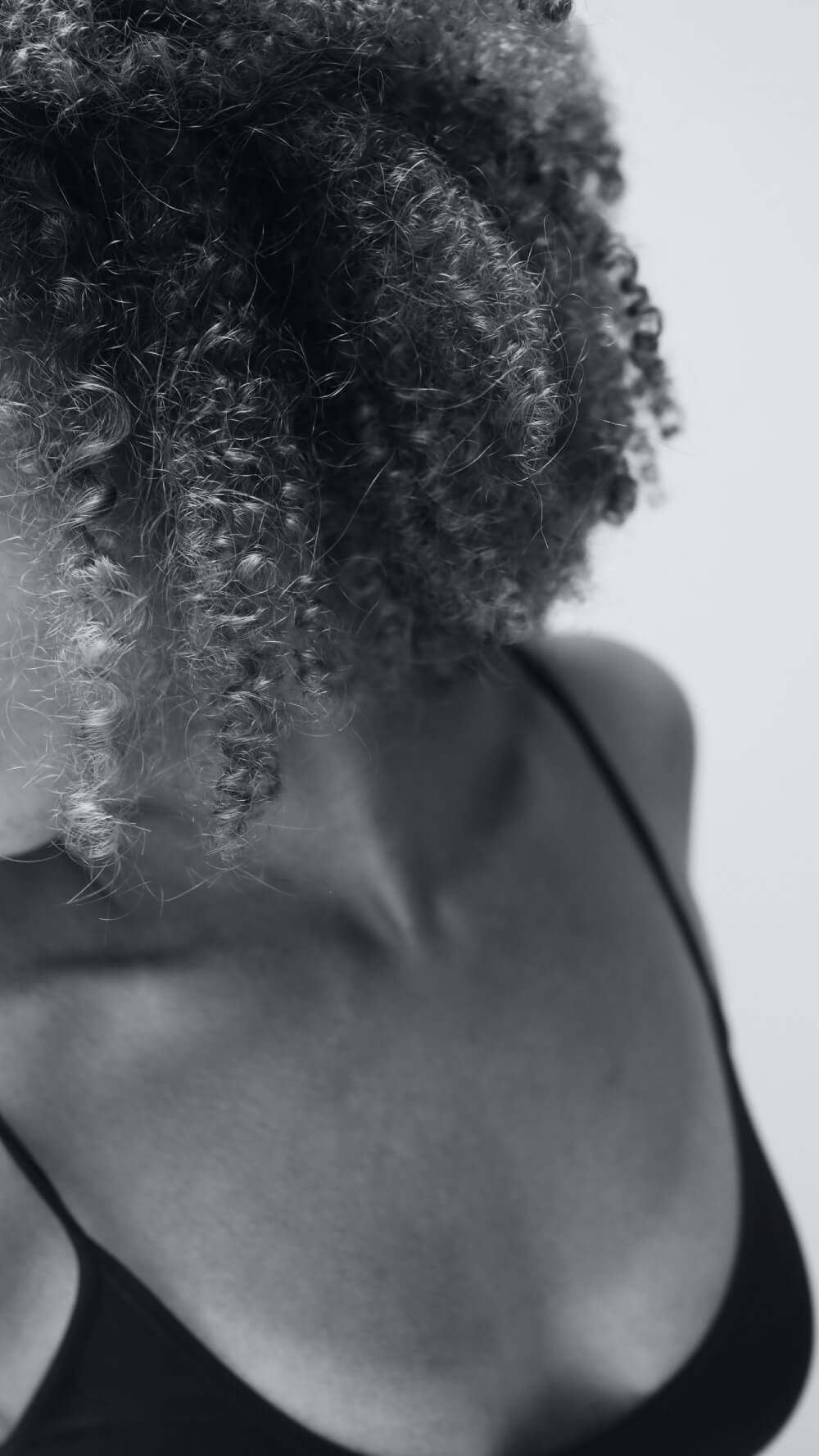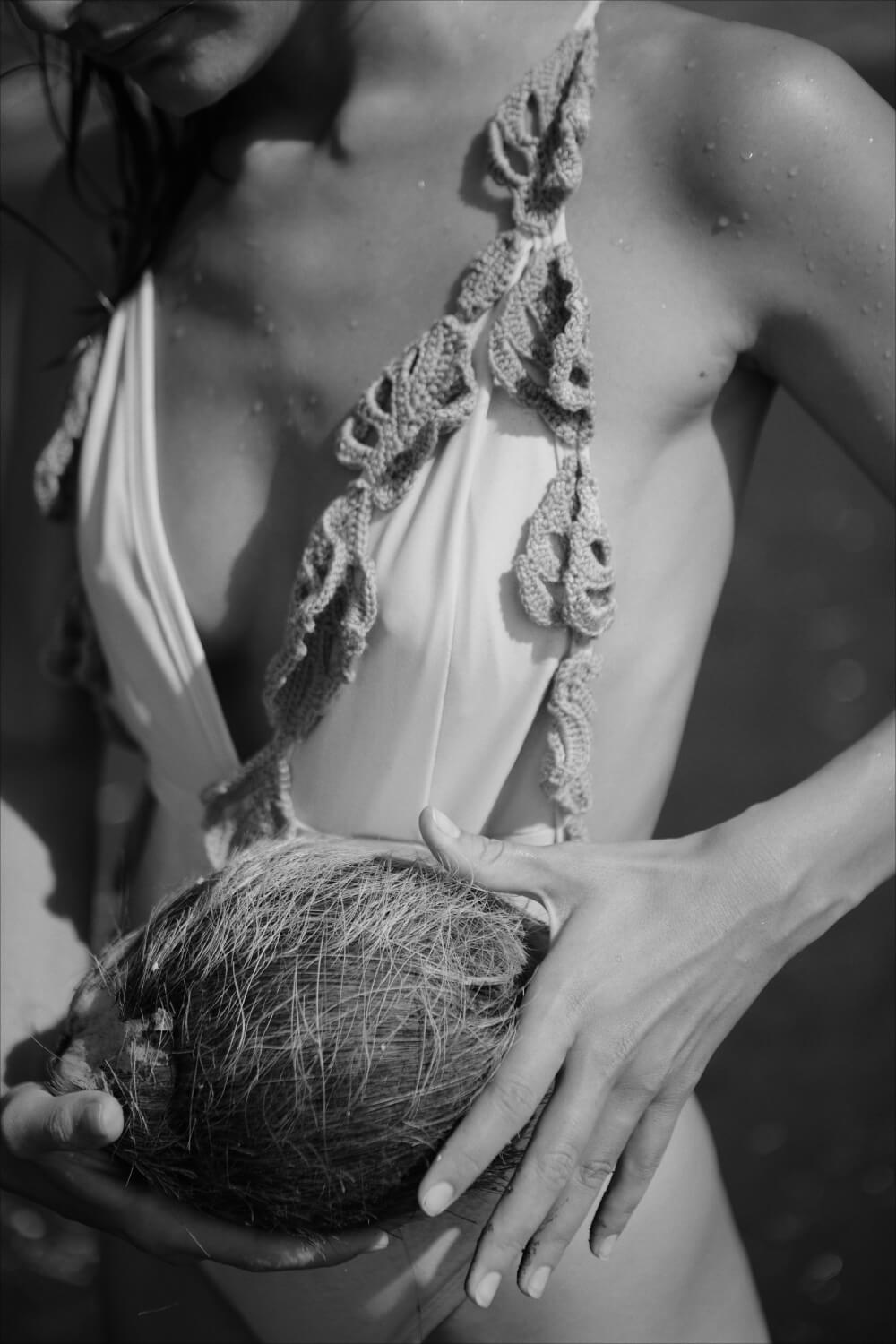Breast augmentation with autologous fat, natural, sustainable and without scars

In brief
What motivates people to undergo breast augmentation with autologous fat?
In recent years, the trend towards sustainability and mindfulness for nature and body has fortunately become more and more present.
We no longer just look after our bodies on the outside, but also from the inside. In addition to a conscious and therefore healthy diet, this also includes avoiding less sustainable products.
This awareness is also becoming apparent in aesthetic surgery: More and more patients who are interested in breast augmentation are placing decisive value on a result that impresses with its naturalness.
This is precisely why a particularly beautiful result can be achieved by using the body’s own fatty tissue.
This makes the breast look larger, but not artificial.
Even if the silicone implants used today come very close to the natural feel, they still represent a foreign body that many women do not consider implanting into their own body.
What is breast augmentation with autologous fat?
As the name suggests, this method uses the body’s own fatty tissue from other parts of the body to enlarge the breast.
The advantage quickly becomes clear when looking at the anatomy: the female breast consists largely of fatty tissue, which surrounds the mammary gland on all sides and is therefore decisive for its size and shape. It is precisely this fatty tissue that is increased, which naturally enlarges the breast.
The existing shape is retained wherever possible and also harmonized.
Further advantages are that the suctioned fat is not disposed of but reused; in addition, a scar-free result is possible as only small incisions are necessary.
Duration
from 90 min
Pain
low
Scars
ca. 3 mm
Stay
outpatient
Bandage
plaster
Work
after 1 day
Sports
after 14 days
Costs
from € 4.950,-
What different methods are available?
Even though the basic principle of breast augmentation with autologous fat is uncomplicated, there are several methods for removing and returning fat. We perform the operation using the gentlest method according to current study results: water-jet assisted liposuction (WAL). As a result, a high take rate of the transplanted fatty tissue can be expected.

Who is breast augmentation with autologous fat suitable for?
In principle, this operation is suitable for any woman who is interested in breast augmentation. If silicone implants are not an option, the autologous fat method is the most natural and harmonious option. However, your personal anatomy will determine whether and how much fat can be inserted and, above all, what the result will look like after the operation.
As the autologous fat is removed, purified and returned in liquid form, the basic shape of your breast is crucial. A sagging, slightly “drooping” breast will therefore appear fuller and more harmonious after the operation, although it will still “sag” somewhat. A youthful, “empty” or “small” breast will also retain its shape after the autologous fat transplant, but will be significantly larger.
When is the best time to do it?
Who is it not suitable for?
In the rare case that you have too little fat mass or a very low BMI, an autologous fat transplant may not be possible. The less fat there is, the longer the operation will take, as several so-called “donor zones” have to be suctioned out.
Since particularly nutrition-conscious, athletic women opt for breast augmentation with autologous fat, it is difficult to give the BMI as a guide value. With BMI values below 18, the fat reserves are extremely scarce, but regions with sufficient fatty tissue can usually be found.
A small self-test is the “fat pinch”. Pinch the skin with your thumb and forefinger and see how much tissue you can hold between your fingers. If the layer of fat between your fingers is approx. 3 cm or more, the procedure is very suitable for you. If your fat layer is thinner than 2 cm, surgery would be possible, but 2-3 zones of liposuction are absolutely necessary.

How does the operation work technically?
Breast augmentation with autologous fat consists of a total of three stages, all of which take place during one surgical procedure and together last around one and a half hours. After you have determined your “donor zones” for liposuction during a detailed initial consultation, these are marked accordingly before the operation. If any changes are required shortly before the operation, we will be happy to go through these during the obligatory consultation shortly before the start of the operation.
At the beginning of the operation, the fatty tissue is first removed using liposuction. We only use the water-jet assisted method for this: WAL. According to current studies, it is currently by far the gentlest method of liposuction and has been shown to achieve healing rates of up to 76%. In addition, the gentle infiltration of a water solution during liposuction makes it possible to assess the liposuctioned area. This significantly minimizes the risk of dents and grooves.
The fat/water mixture is then collected in a sterile container and briefly centrifuged. This process guarantees rapid separation of water and fat so that only a pure volume of fat is transplanted and not a diluted solution. The fat is then gently transferred into the breast without pressure and in thin strands. The layers under the skin, below the mammary gland and within the muscles are filled. If enrichment with PRP (platelet rich plasma) is planned, this is done before the injection into the breast. Care is taken at every stage to handle the fat cells gently in order to keep the healing rate as high as possible.
Surgical and conservative alternatives
There are various conservative and surgical alternatives for many operations. It is therefore necessary to consider these carefully before any surgical intervention. If the use of a scalpel can be dispensed with due to conservative alternatives, these are of course preferable.
In the case of breast augmentation, however, the options with non-surgical alternatives are extremely limited. Although special vacuum treatments have shown a small increase in volume in studies, this required wearing the corresponding vacuum pumps for three months and 20 hours. This treatment method was rarely chosen and is therefore not relevant. Another surgical alternative is breast augmentation with silicone implants.
What kind of anesthesia is necessary?
Combination with other procedures

Photos
The photos show patients before and 4 months after breast augmentation with autologous fat. The photos will give you an idea of the results you can expect.
I am available for a second consultation and will gladly make corrections to operations performed elsewhere at a lower price (depending on the extent).
However, you should first discuss any dissatisfaction with the surgeon who operated on you – it is quite possible that you will be able to benefit from a free follow-up correction.


Is this operation performed on an outpatient or inpatient basis?
Risks and complications
Minor complications
Autologous fat grafting is a breast augmentation procedure with relatively few complications. If performed carefully, the risk of permanent consequences is very low. As with all surgical procedures, there may be minimal pain, comparable to moderate muscle soreness, as well as swelling and hematomas. These occur both at the removal sites and on the breast. After approx. 3-4 weeks, this should subside considerably. Many women only report a slight pulling sensation in the breast.
Other possible complications in the donor area can include dents and irregularities. As a preventative measure, strict care is taken during the operation to ensure that the areas are evenly lumpy. Nevertheless, minimal irregularities may remain. To minimize the risk of irregularities in the suctioned areas after the operation, we recommend consistently wearing compression garments and lipomassages by your physiotherapist.

Rare, major complications
After transplantation of adipose tissue, it is essential to ensure immediate blood supply to the fat cells. If there is insufficient blood flow/diffusion within the first 48 hours, the cells may suffer significant damage. Pressure, cold and nicotine consumption jeopardize the blood circulation and thus the survival of the cells. This can result in so-called fatty tissue necrosis (dead fat particles) or oil cysts in the breast. These are rarely noticed by patients and in exceptional cases must be surgically removed. Such changes typically occur within the first 6-12 months after the operation. Such changes can also be visualized by the radiologist as part of breast cancer screening.
Rarely, persistent swelling and lymphatic drainage disorders occur. This is not a permanent condition. Nevertheless, those affected describe this development as unpleasant. Consistent lipomassage shortly after the operation can have a preventative effect.
What to do in the event of complications?
Healing and progress
How long does the healing process take?
The transplanted fat cells must be protected, especially during the first 2 weeks. We therefore recommend avoiding jumping and bouncing sports. In the first 24-48 hours you will notice moderate swelling, bruising (especially at the donor site), slight pain and minimal discomfort. It is normal that you will need mild painkillers. Most patients take a day off on the first day after the operation to give the body the rest it needs to recover quickly. After 48 hours you will be able to shower normally with “shower plasters”.
If you do not have to do any heavy physical work, you will probably be able to return to work from the 3rd/4th day after the operation.
After about a month, the majority of patients feel as they did before. Slight bruising and any swelling will have largely disappeared. Your breasts will take on their “final” shape over the coming months.
After 6-8 weeks, all sporting activities are possible again. This does not apply to competitive athletes who put a lot of strain on their chest muscles.
Of course, these time recommendations are guidelines based on our experience, which sometimes require individual adjustment.
Your body will take as much time as it needs.
Is the treatment painful



“Wieder ein ausgezeichnetes Ergebnis der Botox-Behandlung! “
“I love Morpheus 8. My favorite!“
“Ich habe erheblich mehr Schmerzen nach dem Eingriff erwartet und war positiv überrascht wie gut es mir noch am selben Tag und jetzt an Tag 2 geht. Der Tag der...
“Ich war heute zum wiederholten Mal für eine Botox-Behandlung bei Dr.Lutfi und werde mich auch in Zukunft nur von ihm behandeln lassen. Sollte ich jemals andere...
“Kompetente und ausführliche Beratung und super Behandlung (Botox gegen Lachfalten). Bin mit dem Ergebnis sehr zufrieden und komme gerne wieder! “
When can the final result be expected?
What should patients plan to do?
A surgical procedure requires a certain amount of planning and organization not only for the surgical team, but also for the patient, both before and after the operation. It is important that you are well prepared and know what to expect. This allows you to concentrate fully on enjoying the results.
One of the most important questions before any surgical procedure is the “why”. You should be clear about why you want to have surgery at all. Once you have answered this question and made a decision, the following questions should definitely be clarified: How? By whom? When?
I will be delighted if you find your way to my surgery and would like to be operated on by me. However, I also recommend all my patients to get a second opinion. You should be absolutely sure about the date and surgeon.
Plan the time before your surgery
Plan the time after your surgery

What does breast augmentation with autologous fat cost?

Financing, down payment, installments
FAQ - Breast augmentation with autologous fat
Plastic surgery
- Home
- About Me
- Aesthetic surgery
- Aesthetic treatments
- Before After Archive
- Ordination
- For doctors
- Contact
- Cost

